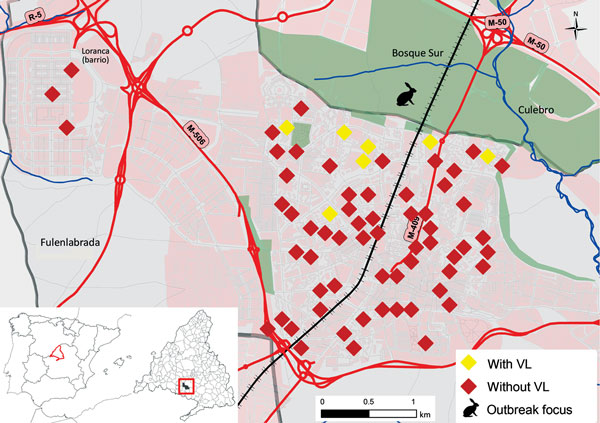Volume 23, Number 7—July 2017
Dispatch
Environmental Factors as Key Determinants for Visceral Leishmaniasis in Solid Organ Transplant Recipients, Madrid, Spain
Figure 2

Figure 2. Spatial distribution of solid organ transplant recipients in the southwest area of Madrid, Spain, in relation to park that was focus of visceral leishmaniasis (VL) outbreak, January 1, 2005–January 1, 2013. Map inset shows the location of the outbreak in relation to the rest of Spain. VL, visceral leishmaniasis.
Page created: June 19, 2017
Page updated: June 19, 2017
Page reviewed: June 19, 2017
The conclusions, findings, and opinions expressed by authors contributing to this journal do not necessarily reflect the official position of the U.S. Department of Health and Human Services, the Public Health Service, the Centers for Disease Control and Prevention, or the authors' affiliated institutions. Use of trade names is for identification only and does not imply endorsement by any of the groups named above.